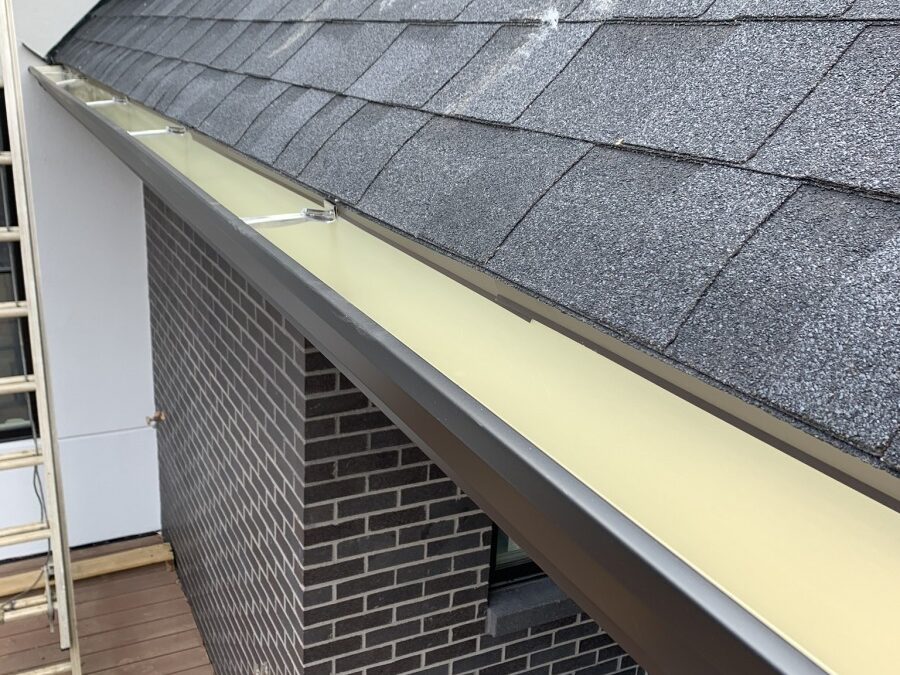When people think about their home’s defense against water damage, they often imagine their roof, walls, and foundation as the main lines of protection. However, one of the most important but least celebrated components of your home’s water management system is the gutter drip edge. At Tiger Gutters in Memphis, TN, we believe it’s time to give the drip edge the credit it deserves as the unsung hero of your home’s exterior, quietly preventing serious damage and saving you from costly repairs.
In this unique exploration of the gutter drip edge, we’ll go beyond the basics and look at how this small but mighty piece of metal flashing is actually working 24/7 to protect your home. From defying gravity to outsmarting Memphis’ heavy rainfall, the drip edge is essential in ways you may never have imagined.
The Science Behind the Drip Edge: Defying Gravity
Gravity may be a force of nature, but when it comes to water, gravity can be a destructive force if not controlled properly. The gutter drip edge is designed to do just that—control the flow of water by directing it away from your roof and into your gutters. While it may sound simple, this function involves some pretty interesting physics.
As water flows down the slope of your roof, gravity pulls it toward the edge. Without a drip edge, the water would cling to the underside of the roof due to surface tension, eventually finding its way behind the gutters and into areas it shouldn’t—like your fascia, soffit, or even the walls of your home. This can lead to serious issues like wood rot, mold growth, and structural damage. The drip edge is specifically angled to break that surface tension and direct the water safely into the gutter system, making it an essential partner to both your roof and gutters.
The Unsung Hero of Storm Protection
Living in Memphis, we’re no strangers to intense thunderstorms and unpredictable weather. While the roof and gutters take most of the credit for keeping your home dry, the gutter drip edge plays a crucial behind-the-scenes role during these storms.
Picture a typical summer thunderstorm in Memphis. The rain comes down in sheets, and the wind drives it sideways, threatening to push water into every nook and cranny of your roof. While your gutters are designed to handle the flow of water, they rely heavily on the drip edge to ensure that the water actually makes it into the gutter system rather than running down behind it. The drip edge shields the roof’s edge from wind-driven rain, creating a barrier that prevents water from infiltrating areas that could lead to expensive repairs.
Why Your Roof is Incomplete Without a Drip Edge
Here’s a surprising fact: many homes, particularly older ones, were built without a drip edge. In the past, builders often skipped this step, not fully understanding its importance. However, modern building codes now recognize the drip edge as an essential part of any roofing system, and for good reason.
A roof without a drip edge is like a car without windshield wipers. Sure, it works in good weather, but the moment it rains, you’re in trouble. Without a drip edge, the edges of your roof are vulnerable to water intrusion, which can lead to premature wear on your shingles, roof deck, and fascia. Over time, this can reduce the lifespan of your roof and lead to costly repairs that could have been avoided with the simple addition of a drip edge.
If you’re in the process of upgrading your roof or gutters and you don’t already have a drip edge, it’s something you should strongly consider, especially in a climate like Memphis that sees significant rainfall throughout the year.
Memphis Weather and the Gutter Drip Edge: A Perfect Pair
Memphis is known for its diverse and sometimes extreme weather. From humid summers and thunderstorms to the occasional cold snap, the elements can take a toll on your home. But did you know that the gutter drip edge is one of the key players in adapting to Memphis’ specific weather challenges?
- Heavy Rainfall: Memphis experiences an average of 53 inches of rain per year, which is well above the national average. A gutter drip edge helps manage this high volume of water by ensuring that rainwater is funneled directly into your gutters, rather than allowing it to splash over the edge or seep into the roof deck.
- Humidity: The high humidity in Memphis can accelerate the growth of mold and mildew, particularly in areas where water is allowed to pool or seep. A drip edge minimizes this risk by ensuring water is efficiently channeled into the gutter system, reducing the likelihood of wood rot or mold.
- Winter Challenges: While Memphis winters are relatively mild, cold snaps and ice storms can still occur. Ice can form along the edges of your roof, and without a drip edge, water may refreeze under your shingles, leading to ice dams. A well-installed drip edge helps prevent this by ensuring that melting snow and ice flow directly into your gutters.
The Green Side of the Gutter Drip Edge: Sustainability in Home Maintenance
Most people don’t think about sustainability when they think about gutters or drip edges, but these components actually play a role in environmentally friendly home maintenance. Here’s how:
- Preventing Water Damage Means Less Waste: When your home suffers from water damage, repairing or replacing damaged materials like wood, drywall, or insulation can generate a lot of waste. By preventing water intrusion, a drip edge reduces the need for these repairs, which in turn reduces your home’s overall environmental footprint.
- Prolonging Roof Lifespan: A drip edge helps protect the edge of your roof, extending its lifespan. A longer-lasting roof means fewer roofing materials need to be produced, transported, and installed over the life of your home, contributing to less resource consumption.
- Recyclable Materials: Drip edges are typically made from metals like aluminum or galvanized steel, both of which are highly recyclable. If you ever need to replace a drip edge, the material can often be recycled, reducing waste.
How the Gutter Drip Edge Is a Silent Partner to Your Home’s Aesthetic
It’s not just about protection; the gutter drip edge can also enhance the aesthetic of your home. Available in a range of materials and colors, drip edges can be chosen to complement the design of your roof and gutter system. Whether you opt for a sleek aluminum finish or a bold colored steel, the drip edge can be both functional and stylish, adding a subtle touch that blends seamlessly with your home’s exterior.
Moreover, a well-maintained drip edge can prevent unsightly water streaks and stains on your siding and fascia, keeping your home looking clean and polished.
Conclusion
When it comes to protecting your Memphis home from the elements, the gutter drip edge is one of the most effective and underappreciated tools in your home’s water management arsenal. At Tiger Gutters, we believe in the power of education, and understanding the role that the drip edge plays can help you make informed decisions about your home’s maintenance. This simple yet crucial piece of metal flashing works tirelessly to keep water where it belongs—flowing into your gutters and away from your home’s most vulnerable areas.
Remember, while the drip edge may not be the most visible part of your gutter system, its function is invaluable when it comes to preventing costly damage and maintaining the integrity of your roof and fascia. So the next time you think about your home’s water management, give a little nod to the unsung hero—the gutter drip edge.

